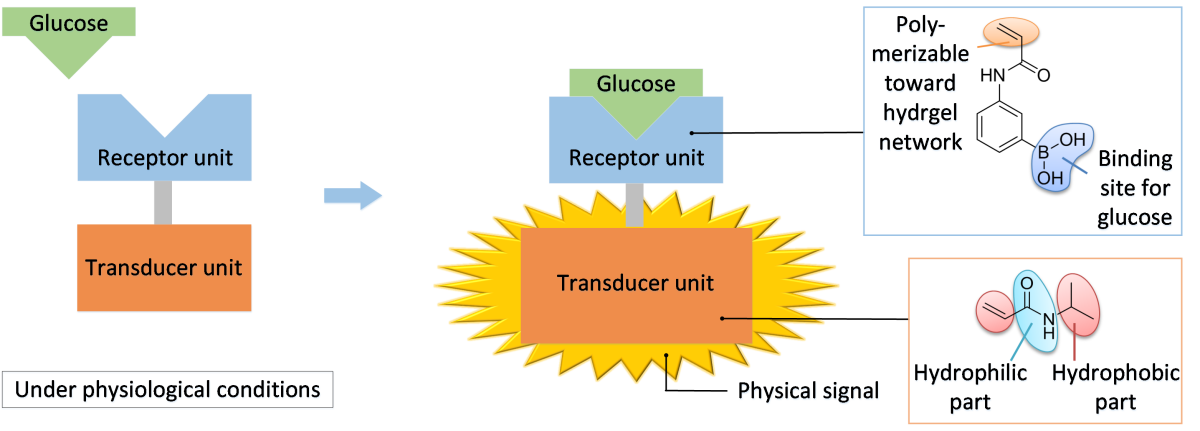Hydrogels
Glucose-responsive hydrogels as transducer/actuator in sensors
Biosensors for continuous monitoring of glucose concentration would be attractive, and glucose-responsive polymeric hydrogels could be used as receptor/transducer element in such sensors. Those materials consist of two interacting functional units: The receptor unit is able to bind glucose covalently and reversibly; the transducer unit converts the chemical binding event into a physical signal. For the latter purpose a hydrogelnetwork is used which is able to change its water content in dependence of the environment, but also as function of the hydration change of the receptor units upon target binding. Efforts had been made by other groups to synthesize hydrogels with phenylboronic acid groups for glucose recognition and to adjust their working range to physiological conditions (pH 7.4, 37°C, 150 mM NaCl), but still the mechanism of glucose detection is not fully understood [1,2], and there is a strong interest in materials with higher selectivity and sensitivity.
The aim of this work is to elucidate the interplay between the affinity of the hydrogel towards glucose and the response of the network to the binding event. One key objective is to obtain materials where the swelling pressure can be used as physical signal. Several types of polyacrylamide-based networks are investigated, including hydrogels with an additional responsivity to temperature achieved by using poly(N-isopropylacrylamide). The response of hydrogels with varied structure and architecture towards glucose and fructose, the most frequent sugars in human blood, is analyzed. To gain a more detailed understanding of the interactions between glucose and phenylboronic acid groups, well-established analytical methods such as displacement assays or DSC measurements are adapted to the analysis of hydrogels. The goal is to obtain thermodynamic data for glucose binding such as binding isotherms and affinity constants. Finally, the performance of the hydrogels is evaluated by measuring the swelling pressure in response to glucose concentration under different conditions in a pressure sensor system.
References:
[1] A. Matsumoto, K. Yamamoto, R. Yoshida, K. Kataoka, T. Aoyagic, Y. Miyahara, Chemical Communications, 2010, 46, 2203
[2] S. Tierney, S. Volden, B. T. Stokke, Biosensors and Bioelectronics, 2009, 24, 2034
Contact: Prof. Dr. Mathias Ulbricht


